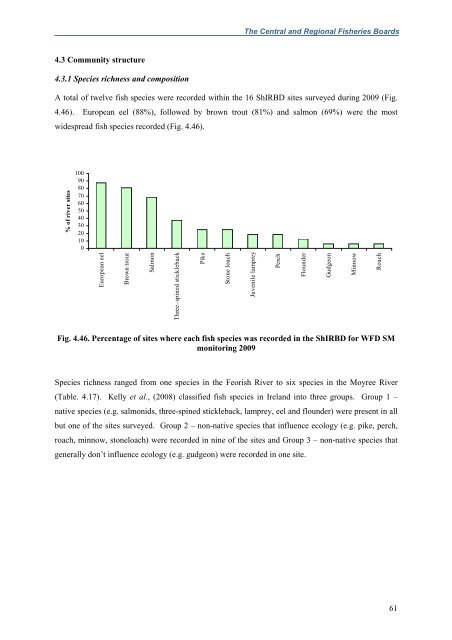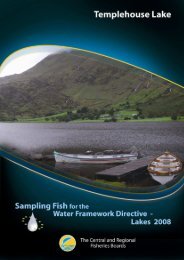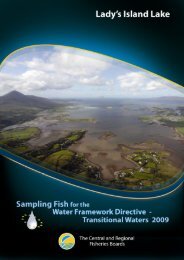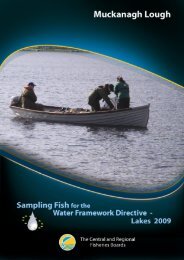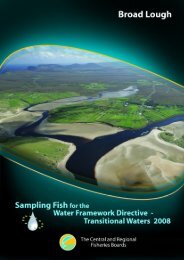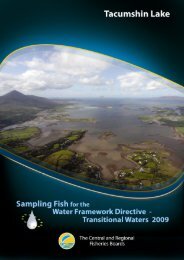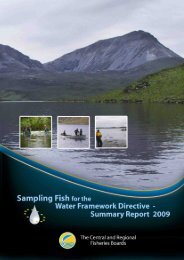HERE - Inland Fisheries Ireland
HERE - Inland Fisheries Ireland
HERE - Inland Fisheries Ireland
Create successful ePaper yourself
Turn your PDF publications into a flip-book with our unique Google optimized e-Paper software.
The Central and Regional <strong>Fisheries</strong> Boards<br />
4.3 Community structure<br />
4.3.1 Species richness and composition<br />
A total of twelve fish species were recorded within the 16 ShIRBD sites surveyed during 2009 (Fig.<br />
4.46). European eel (88%), followed by brown trout (81%) and salmon (69%) were the most<br />
widespread fish species recorded (Fig. 4.46).<br />
100<br />
90<br />
80<br />
70<br />
60<br />
50<br />
40<br />
30<br />
20<br />
10<br />
0<br />
European eel<br />
Brown trout<br />
Salmon<br />
Three–spined stickleback<br />
Pike<br />
Stone loach<br />
Juvenile lamprey<br />
Perch<br />
Flounder<br />
Gudgeon<br />
Minnow<br />
Roach<br />
% of river sites<br />
Fig. 4.46. Percentage of sites where each fish species was recorded in the ShIRBD for WFD SM<br />
monitoring 2009<br />
Species richness ranged from one species in the Feorish River to six species in the Moyree River<br />
(Table. 4.17). Kelly et al., (2008) classified fish species in <strong>Ireland</strong> into three groups. Group 1 –<br />
native species (e.g. salmonids, three-spined stickleback, lamprey, eel and flounder) were present in all<br />
but one of the sites surveyed. Group 2 – non-native species that influence ecology (e.g. pike, perch,<br />
roach, minnow, stoneloach) were recorded in nine of the sites and Group 3 – non-native species that<br />
generally don’t influence ecology (e.g. gudgeon) were recorded in one site.<br />
61


